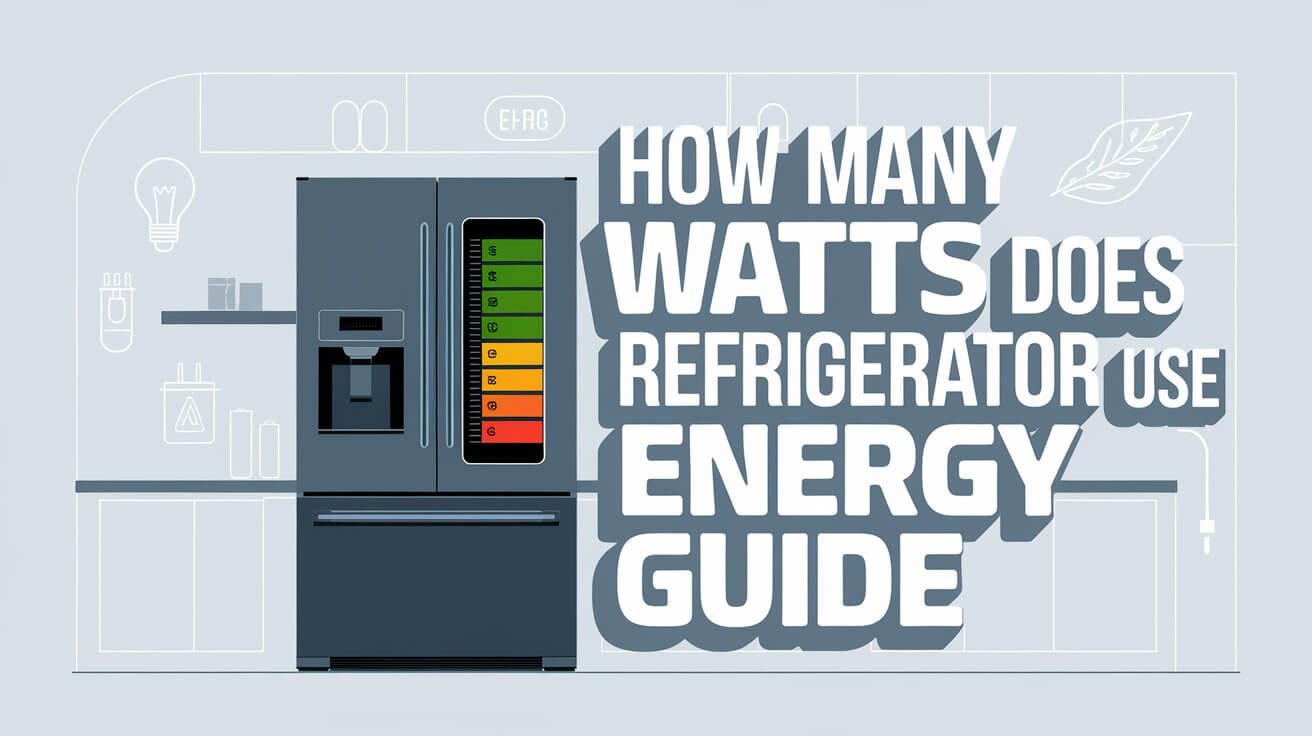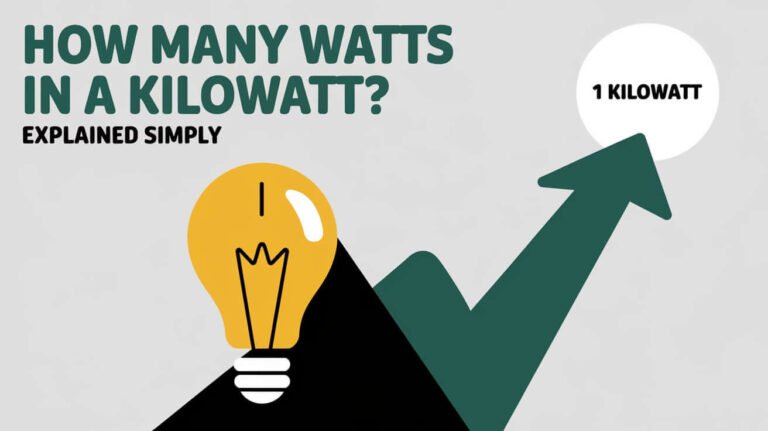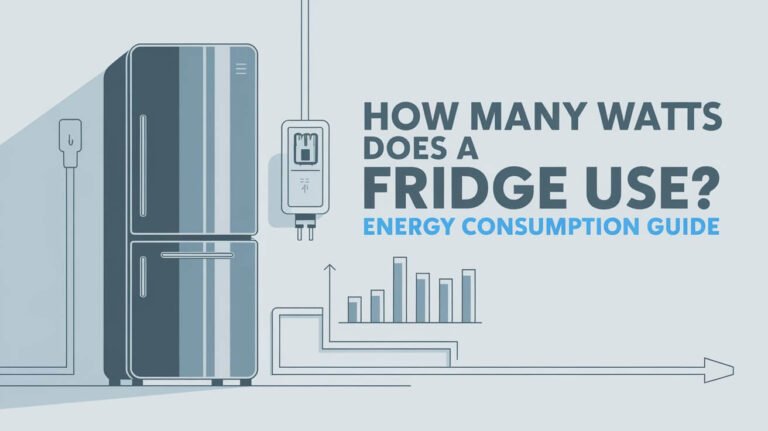
A typical home refrigerator uses between 100 to 400 watts of electricity. This is a big part of household energy usage. Knowing how much a fridge uses is key to managing energy at home.
Modern fridges use 25 percent or less energy than older ones. This is good news for your wallet and the planet.
The average fridge uses about 230 watts per hour. That’s around 5,520 watts a day. This can cost you about $0.82 a day, depending on your area’s electricity rate.
By understanding your fridge’s power use, you can cut down on your bills. This helps make your home more energy-efficient and eco-friendly.
Average Power Consumption of Modern Refrigerators
Modern refrigerators are made to save energy. They use less power than older models. The power use can be between 100-400 watts, depending on size, age, and type.
Energy-efficient appliances, like those with the Energy Star label, use about 15% less energy. This means they cost less to run over time.
When comparing different refrigerators, standard-size ones use more energy than compact ones. But, the exact power use can change a lot. For example, a typical home fridge uses 100-400 watts per hour. A mini fridge might use around 90 watts.
Standard-Size Refrigerator Wattage Range
Standard-size fridges use 100-250 watts per hour. This means they use 2.4 to 6 kilowatt-hours daily. This can change based on how often you open the door and the temperature setting.
Compact Refrigerator Power Usage
Compact fridges use less energy than standard ones. They use 50-150 watts per hour. This makes them a good choice for small spaces or offices.
Energy Star vs. Non-Energy Star Models
Energy Star certified fridges are more energy-efficient. They can save 10-50% on electricity costs. This makes them a smart choice for saving money and energy.
| Refrigerator Type | Energy Consumption (kWh/day) | Cost ($/day) |
|---|---|---|
| Energy Star | 2.4 | 0.30 |
| Non-Energy Star | 4.0 | 0.50 |
Choosing an energy-efficient fridge and using energy-saving tips can help a lot. You can cut down on energy use and save money on your power bills.
Factors That Impact Your Refrigerator’s Power Usage
Several elements can affect how much power your refrigerator uses. The size and age of the appliance matter a lot. Also, its features, like ice dispensers and water filters, play a role in energy efficiency.
Things outside the fridge also matter. For example, a warmer room makes the fridge work harder. This means it uses more power. Also, opening the fridge door often can increase energy use.
Some key factors that impact power usage include:
- Size and age of the refrigerator
- Features such as ice dispensers and water filters
- Ambient temperature
- Usage patterns, including door openings and storage habits
Knowing these factors can help you make your fridge more efficient. This can save you money and help the environment.
Daily Power Consumption Calculation Methods
To figure out how much energy your fridge uses, you need to know the power consumption formula. Most fridges use between 300 and 800 watts. But, the actual power used is usually one-third of what’s on the label.
For example, a fridge with a label saying 420 watts actually uses about 140 watts. To find out your fridge’s daily energy use, multiply the wattage by the hours it runs each day. Then, divide by 1000 to get kWh. This tells you how much energy your fridge uses in a day.
Knowing this, you can estimate your monthly energy cost. The average electricity cost is $0.1573 per kWh. But, this can change based on where you live and the season.
Step-by-Step Power Usage Formula
The formula for power usage is simple: Wattage x Hours Used / 1000 = kWh. For instance, if your fridge uses 140 watts for 24 hours, it uses 3.36 kWh daily. Then, multiply this by the average electricity rate to estimate your daily cost.
Monthly Energy Cost Estimation
To estimate your monthly energy cost, first find your daily energy use. Then, multiply this by the number of days in the month. Lastly, multiply by the electricity rate. This gives you an estimate of your monthly energy cost.
With this information, you can compare the energy costs of different refrigerators. This helps you choose the most energy-efficient one for your needs.
Seasonal Usage Variations
The energy your fridge uses can change with the seasons. In summer, it works harder to keep food cool, using more energy. In winter, it uses less. Understanding these changes helps you better estimate your energy costs.
Using the power consumption formula and considering seasonal changes, you can accurately calculate your fridge’s energy use. This knowledge helps you make smart choices about your energy usage.
How Many Watts Does a Refrigerator Use Per Hour
A typical home refrigerator uses between 100-400 watts per hour. This depends on its age, size, and type. Knowing the hourly power consumption is key for those wanting to cut down on energy use. You can find out the refrigerator wattage per hour by looking at the manufacturer’s specs or using a wattage meter.
The energy use measurement changes based on how often the compressor runs. Most fridges use 100-400 watts per hour, with the compressor on about 30% of the time. Several factors can influence a refrigerator’s hourly power use:
- Age and type of refrigerator
- Size of the refrigerator
- Compressor efficiency
- Temperature settings
Understanding what affects hourly power consumption helps homeowners save energy and money. Getting an energy-efficient fridge, keeping it in a well-ventilated spot, and setting the right temperature can cut down on refrigerator wattage per hour and energy use overall.
Power Requirements Based on Refrigerator Size
When looking at refrigerator size energy use, it’s key to think about power by capacity. Bigger fridges often use more power, but efficiency can differ. It’s important to remember, size doesn’t always mean less efficient.
A typical fridge’s power use can be between 100-400 watts. This depends on its age, type, and size. Here’s a rough guide to power use by fridge size:
- Small refrigerators (under 10 cubic feet): 50-100 watts
- Medium refrigerators (10-20 cubic feet): 100-200 watts
- Large refrigerators (over 20 cubic feet): 200-400 watts
Modern tech in big fridges can sometimes make them more energy-efficient. Knowing a fridge’s energy efficiency and size helps you choose wisely.
Energy-Efficient Operation Tips
To cut down on refrigerator energy use, it’s key to use power-saving methods and use your fridge efficiently. Keeping the fridge at or above 34 degrees Fahrenheit and the freezer at 0 degrees helps a lot. This ensures your fridge works well.
Regular upkeep is also vital. Cleaning the condenser coils twice a year boosts your fridge’s performance. Also, keep your fridge a few inches from the wall for better air flow. Here are more tips to cut down energy use:
- Keep the freezer about 70 percent full to maintain efficiency and reduce wasted energy.
- Avoid placing the refrigerator near heat sources such as ovens or direct sunlight.
- Replace door seals to significantly enhance the refrigerator’s operating efficiency.
Following these tips, you can lower your fridge’s energy use and your electricity bill. Small changes can make a big difference. They make your fridge use less power and help the environment.
| Tip | Energy-Saving Potencial |
|---|---|
| Proper temperature settings | 5-10% reduction in energy consumption |
| Regular coil cleaning | 2-5% reduction in energy consumption |
| Optimal freezer utilization | 5-10% reduction in energy consumption |
Common Power-Draining Issues
Refrigerators can waste a lot of energy in homes. Problems like bad door seals, wrong temperature settings, and not keeping up with maintenance can make them use more power. A broken door seal, for example, can make a fridge use up to 25% more energy. This can lead to higher electricity bills and more energy waste.
Door Seal Problems
A damaged or old door seal lets cold air out. This makes the fridge work harder and use more energy. Look for cracks or gaps in the seal to spot this problem. Replacing the seal regularly can help save energy and cut down on bills.
Temperature Setting Mistakes
Setting the fridge’s temperature too low can also waste energy. It makes the fridge work harder, which increases your bills. Keep the temperature between 37°F and 40°F to avoid this.
Maintenance Oversights
Not keeping up with maintenance can also cause problems. Cleaning the condenser coils and checking the seals regularly can help. It prevents energy waste and keeps your fridge running efficiently.
Smart Technology Impact on Refrigerator Wattage
Smart refrigerators are gaining popularity fast. They use advanced technology to lower their power use. This is done by adjusting their energy use based on how often you use them and when.
Some smart refrigerators can even change their defrost cycles to when electricity is cheaper. This helps save both energy and money.
Smart refrigerators come with cool features like:
- Adaptive defrost cycles
- Smart grid compatibility
- Energy monitoring and reporting
These features can cut energy use by up to 50% compared to old models.
Smart refrigerators also offer more than just energy savings. They help keep your food fresh for longer. This means you don’t have to shop for groceries as often and waste less food.
| Feature | Energy Savings | Benefits |
|---|---|---|
| Adaptive defrost cycles | Up to 20% energy savings | Reduced energy consumption and costs |
| Smart grid compatibility | Up to 30% energy savings | Improved energy efficiency and reduced peak demand |
| Energy monitoring and reporting | Up to 10% energy savings | Improved energy awareness and reduced energy waste |
Conclusion
Understanding how much power your fridge uses is key to saving energy and money. By picking an energy-saving fridge and using it wisely, you can cut down on your electricity bills. This also helps the planet.
If you’re shopping for a new fridge or want to make your current one more efficient, this info helps. Even small changes can make a big difference in energy savings. Follow the tips from this article to make your fridge more efficient and save money.
Frequent Questions
How many watts does a refrigerator use?
Refrigerators use different amounts of watts. Small ones might use 100 watts, while big ones can use over 800 watts. The exact amount depends on the size, features, and how energy-efficient it is.
What is the average power consumption of modern refrigerators?
Standard-size refrigerators usually use 300 to 500 watts. Compact ones use 100 to 300 watts. Energy Star certified models use less power than others.
What factors influence a refrigerator’s power consumption?
Several things affect how much power a fridge uses. These include its size, age, features, and the room temperature. How often you open the door also matters. Keeping it well-maintained and at the right temperature helps too.
How can I calculate my refrigerator’s daily power consumption?
To figure out your fridge’s daily power use, you need to know its wattage and how long it runs. This will help you guess your monthly energy costs. Costs can change with the seasons.
How many watts does a refrigerator use per hour?
A fridge’s hourly power use can change. It depends on things like how often the compressor cycles and its peak power draw. Knowing the difference between peak and average usage helps understand energy use better.
How does refrigerator size relate to power consumption?
Smaller fridges (less than 10 cubic feet) use 100-300 watts. Medium ones (10-20 cubic feet) use 300-500 watts. Larger ones (over 20 cubic feet) can use 500-800 watts or more. But, newer models might use less power, even in larger sizes.
What are some tips for operating a refrigerator more efficiently?
To use less power, keep the fridge at the right temperature. Store food right, clean the coils, and check the door seals. This helps save energy.
What common issues can lead to increased power consumption in refrigerators?
Problems like bad door seals, wrong temperature settings, and not maintaining the fridge can make it use more power. Fixing these issues can make it more efficient.
How is smart technology impacting refrigerator power consumption?
Smart fridges have features like adaptive defrost cycles and smart grid compatibility. These can cut down power use. But, extra features might also increase energy use. So, it’s key to look at the overall energy impact.




